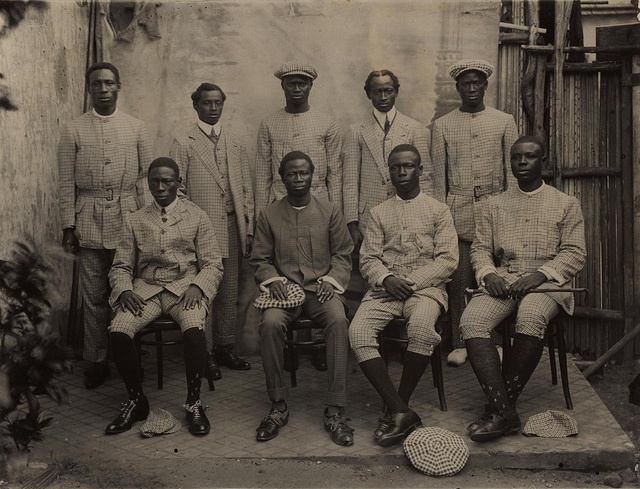The photography business is one of the most popular businesses out there; A photography business provides an array of services, including taking images for individuals and organizations. Photography businesses can specialize in different types of Photography like portrait photography, event photography, landscape photography, stock photography, and many others. They can offer various services, such as photo shoots, editing, printing, and selling digital images and photo products.
The primary goal of a photography business is to turn the photographer’s passion and skills into a profitable venture. To do this, they must attract and retain clients by offering high-quality photography services, establishing a solid brand, and marketing their services effectively.
Having a successful photography business comes with lots of planning. We’ll be giving you a detailed insight into what it takes to successfully run a photography business. Let’s get right into it!.
Understanding your Niche and Target Market
Finding the perfect niche involves weighing in several factors and answering critical questions. The factors range from considering your work experience and personal interests. Look for patterns and themes in the skills and knowledge you have acquired and the tasks that you enjoy and excel at. Seek feedback from colleagues, mentors, and friends, and ask them to identify your strengths and areas of expertise. Finally, look for opportunities to test and refine your skills through work projects, volunteering, or further learning and training.
A step-by-step process will include the following:
- Reflecting on your experience: Consider the type of photography you have been practicing, be it portrait, landscape, street, product, or any other style. Identify the style you enjoy most and the ones you excel at.
- Evaluate your work: Look through your portfolio or pictures you have taken randomly and identify the recurring themes, styles, and techniques that define your work.
- Seek feedback: Ask for feedback from friends, clients, and photographers to identify your strengths and weaknesses.
- Research: Study the work of other photographers in your area of interest, and identify the techniques they use to create their work.
- Practice: Dedicate time to practice and improve your skills in your area of interest. Participate in photography contests, attend workshops, and work with other photographers to learn new techniques.
By following these steps, you can identify your area of expertise in Photography and work to improve your skills in that area.
Researching your target audience
You have been able to identify your area of expertise, and you have improved your skills to soothe the current demands in this area. The next thing is to research the people that will need you for your services; Your target audience.
A photography business plan needs to factor in its target audience for its area of expertise for success. To discover your target audience, start by conducting market research through online resources such as social media platforms, forums, and blogs to understand your target audience’s characteristics, preferences, and behaviors. You can also use tools such as Google Analytics and keyword research to gather information on your target audience.
You gather feedback by reaching out to your existing or potential clients on your work to understand their needs and preferences. You must also conduct competitive analysis by studying the work of other photographers targeting the same audience and identify their strengths, weaknesses, and unique selling points that are the key benefits that set them apart from competitors.
These could be your product’s features, the benefits it offers, your service quality, your experience, or any other factor that makes your product or service stand out. It is essential to test and refine your USP with your target audience to see if it resonates with them. If it doesn’t, refine your USP until it clearly communicates your product or service’s value.
By creating a unique selling proposition, you can differentiate your product or service from competitors and communicate its value to your target audience, which can help attract and retain customers.
The final thing is to create your potential customer personas by using the information gathered from your research to develop detailed customer personas, fictional representations of your target audience that help you better understand their needs and preferences.
By following these steps, you can better understand the needs and wants of your target audience in Photography and use this knowledge to create marketing messages and strategies that resonate with them.
Building your Brand Identity
To build a brand identity, a Brand name that conveys the brand tone, voice, message, and personality should be used because this will influence the overall brand identity, from the brand logo to the marketing strategies to the channels used. For instance, you should choose names that are challenging to replicate and difficult to conflate with those already in use. A new term, an abbreviation, or a word already in service can all be substituted. Additionally, free company name generators are available.
The Brand name will help make choosing the brand logo easy; Designing a brand logo that represents your Brand because it is the face of the Brand and will be everywhere. Invest in a logo that can appear everywhere on the web and in print. For instance, If you have a text logo, it is essential to create a logo or symbol element to represent your text since some social media channels might not accommodate it.
After creating a brand name and logo, you can create an online presence that showcases your work consistently and uniformly with a distinctive approach to your niche market.
Investing in Equipment and Technology
To take good photographs, you will need the right gear; there are a couple of pieces of equipment that are required, and they include;
- Camera
- Lenses
- Speedlight
- Reflector
- Tripod
- Memory Card
- Editing software/Laptop
- External hard drive
- Lens filter
- Camera bag, strap, and cleaning kit
There are technologies and advancements in Photography that improve the quality of pictures. Digital photography tools used in editing pictures help the photographer record videos at high resolutions and make high-quality images. It also allows photographers to enhance their photography skills and accomplish their tasks.
It should be noted that this equipment needs to be upgraded and maintained to help them last longer and be durable for use. For instance;
To ensure your gear lasts longer in between your extensive annual checkup. Make sure to
- Have padded camera bags where you can safely store your cameras and lenses.
- Have a collection of lens caps ready (because you know those things can be easy to misplace).
- Keep canned air and delicate wipes handy, so you can be sure your equipment is free of dust and dirt as you go from shoot to shoot.
- Have a rain cover/sleeve ready in case you need to protect your gear from unexpected moisture.
Creating a Business Plan
Setting clear goals and objectives for your photography business gives you a direction to tread on. Tracking your goals and objectives also helps you understand how well you are doing. An example of a SMART plan will be “I want to book two monthly photoshoot sessions to practice my outdoor couple poses pictures.”
Setting goals and objectives as a photographer are essential for personal growth, career development, and achieving your desired level of success. Here are some steps to help you set meaningful goals and objectives:
- Understand your vision: Understand your vision to know the kind of Photography you want to specialize in, the type of clients you want to work with, and where you see yourself in the future.
- Break down your vision into actionable goals: Break down your vision into specific, measurable, achievable, relevant, and time-bound (SMART) goals. For example, suppose you want to become a wedding photographer. In that case, your SMART goals might include increasing the work in your portfolio, improving your skills, and networking with wedding planners and vendors.
- Set deadlines for your goals to ensure that you stay on track and are motivated to achieve them.
- Prioritize your goals based on their importance and the resources you have available. Focus on the goals that will have the most significant impact on your career and are most achievable in the short term.
- Monitor your progress: Track your progress toward your goals, and make adjustments as needed to stay on track.
- Celebrate your achievements and milestones as you work toward your goals. This will keep you motivated and help you to stay committed to your vision.
Remember, goal-setting is an ongoing process that requires regular review and adjustment. By setting clear, actionable goals and working consistently toward achieving them, you can develop your photography skills, build your business, and perform at your desired level of success.
After setting SMART goals and objectives, you must have a budget and a pricing strategy. It’s crucial to price your photographs according to your time, effort, and market value if you want to be a successful photographer. Use a cost-plus pricing model to calculate how much to charge to cover your costs and turn a profit. Remember to factor in overhead, production, and shipping costs when setting your prices, and make sure you’re earning enough money to support yourself. You can rapidly determine your rates with the use of this guide. A cost-plus pricing model will include calculating the cost of materials, labor, and overhead to get the total cost plus desired profit, which can be any desired percentages, to give the final sale price.
Once you have determined who you will market to, you must develop strategies. What activities will you undertake to get your name out there? There are production service companies that promote your work and connect you with clients. They help ad agencies, brands, and publications to produce photoshoots. They also provide photographers with marketing support. If you shoot wedding photography, you can connect with bridal boutiques and hair salons that might cross-refer business. If you do architectural Photography, network with real estate agents.
When doing your financials, try to project your expenses and income for your first three years of business.
You will have to invest in gear over time and also maintain that gear. You will also have to pay for accounting software, office supplies, and marketing materials. There are a vast amount of other expenses to consider.
You might need an assistant on your shoots. How much will you pay them? How much money will you need to start and survive until you have a positive cash flow? Where will the money come from?
Finally, set up your pricing structure, depending on your photography type. If you shoot portrait photography, you may want to offer packages. If you shoot commercial Photography, you may opt for a day rate and charge for image usage.
At first, your pricing structure will need the flexibility to build up your client list. Be sure not to start too low. It’s challenging to raise your prices once you are more established.
Networking and Building Relationships
Some ways to network and build relationships with other photographers are:
- Attend photography events: Attend photography events such as exhibitions, workshops, and photo walks, where you can meet other photographers, share your work and ideas, and get inspired by others’ work.
- Join online photography communities: Join online photography communities such as forums, groups, and social media platforms, where you can interact with other photographers, learn from their experiences, and get feedback on your work.
- Offer to assist other photographers: Reach out to other photographers and offer to help them with their shoots or projects. This can be a great way to build relationships, learn from more experienced photographers, and gain valuable experience.
- Collaborate with other creatives: Collaborate with other creatives, such as models, makeup artists, and stylists, to build your network, create new work, and learn from others’ experiences.
- Attend networking events: Attend networking events in your local area, such as business conferences or local creative gatherings. This can be a great way to connect with other professionals, build relationships, and get your name out there.
Legal Considerations
- Register your work: Register your photographs with your country’s copyright office. This will give you legal evidence of ownership and allow you to pursue legal action if your work is infringed.
- Use watermarks and metadata: Use watermarks on your images and embed metadata in your photos to indicate that the image is copyrighted and to prevent unauthorized use.
- Include copyright notices: Include a copyright notice on your work, indicating the year the photograph was created and your name or your business’s name.
- Use licensing agreements: Use licensing contracts when allowing others to use your photographs. This will ensure that your work is used only in the ways that you have agreed to.
- Monitor your work: Use tools such as reverse image search engines to monitor your pictures on the internet, and take action if you find that your work is being used without your consent.
- Pursue legal action: If your work is infringed upon, consider pursuing legal action against the infringing party. Consult with a lawyer specializing in copyright law to determine the best course of action.
Staying Current and Improving Your Skills
Some ways in which you can stay current and improve your skills as a photographer:
- Practice: Practice makes perfect, so make sure to regularly take photos, experiment with different techniques and lighting, and challenge yourself to try new things.
- Attend workshops and classes: Attend workshops or classes taught by professional photographers, online courses, or watch tutorials online to learn new techniques or refresh your skills.
- Read photography books and magazines: Read books on Photography, and subscribe to photography magazines and blogs to stay current with industry trends and learn from other photographers’ experiences.
- Network: Connect with other photographers in your community or online, and share your work and ideas. This gives you an opportunity to learn from others, get feedback, and get inspired.
- Social media: Social media platforms are great to share your work, engage with other photographers, and find inspiration from others’ work.
- Attend photography events: Attend photography events such as exhibitions, galleries, and photo walks. This can be a great way to stay updated on the latest trends and techniques in the photography world.
- Staying up-to-date with the latest happenings in the photography industry.
- Seeking feedback and criticism from clients and peers
The most important thing is to consistently practice and explore novel techniques and styles. Don’t be afraid to take new and bold steps to improve your photography skills.
Our Final Thoughts
A career in photography isn’t for the faint of heart. However, doing something you’re passionate about always wins when it is combined with proper market research and a service offering that fits what is in demand. No photographer started having it all or knowing it all so it takes time, dedication, and perseverance to have an illustrious career. Take what you can from this guide and get to work because a small step is greater than inaction. We can’t wait for you to send in your testimonials in a few years.






Photography Business Plan: How to Start a Successful Photography Business